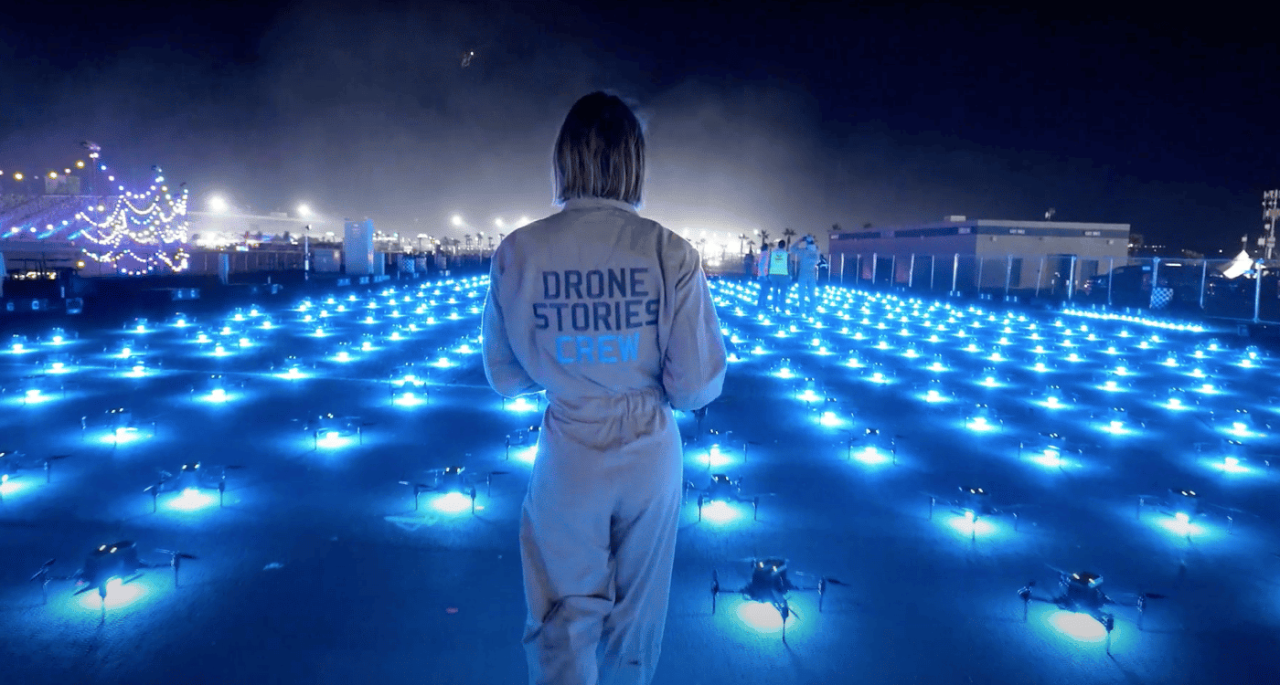Drone shows: Imagine hundreds of drones painting breathtaking images across the night sky, synchronized to music and storytelling. This isn’t science fiction; it’s a rapidly evolving form of entertainment that blends technology, artistry, and spectacle. We’ll explore the technology behind these dazzling displays, from the drones themselves to the complex software driving their movements. Get ready to delve into the world of planning, safety, marketing, and the exciting future of drone shows.
From the initial concept and meticulous choreography to the final breathtaking performance, creating a successful drone show involves a multifaceted process. This guide will walk you through each stage, providing insights into the technical aspects, legal considerations, and creative strategies that transform a simple idea into an unforgettable experience. We’ll cover everything from selecting the right drones and software to developing a compelling marketing campaign and ensuring the safety of both the performers and the audience.
Drone Show Technology
Drone shows are captivating spectacles of coordinated light and movement, but the technology behind them is surprisingly complex. This section delves into the key technological components that make these breathtaking displays possible.
Types of Drones Used in Drone Shows
Modern drone shows typically utilize small, lightweight quadcopter drones. These are chosen for their maneuverability, ease of control, and the ability to carry bright LEDs. While other drone types exist, quadcopters offer the best balance of performance and cost-effectiveness for large-scale shows. Some shows might incorporate specialized drones with enhanced features like increased payload capacity for larger lights or more sophisticated flight controllers.
Software and Hardware Components
A successful drone show relies on a sophisticated interplay of software and hardware. The hardware includes the drones themselves, their onboard flight controllers, a ground control station (GCS), and high-powered computers for show programming and control. The software encompasses the flight control algorithms, show choreography software, and communication protocols that ensure seamless coordination between drones and the GCS.
Flight Control Systems and Communication Protocols
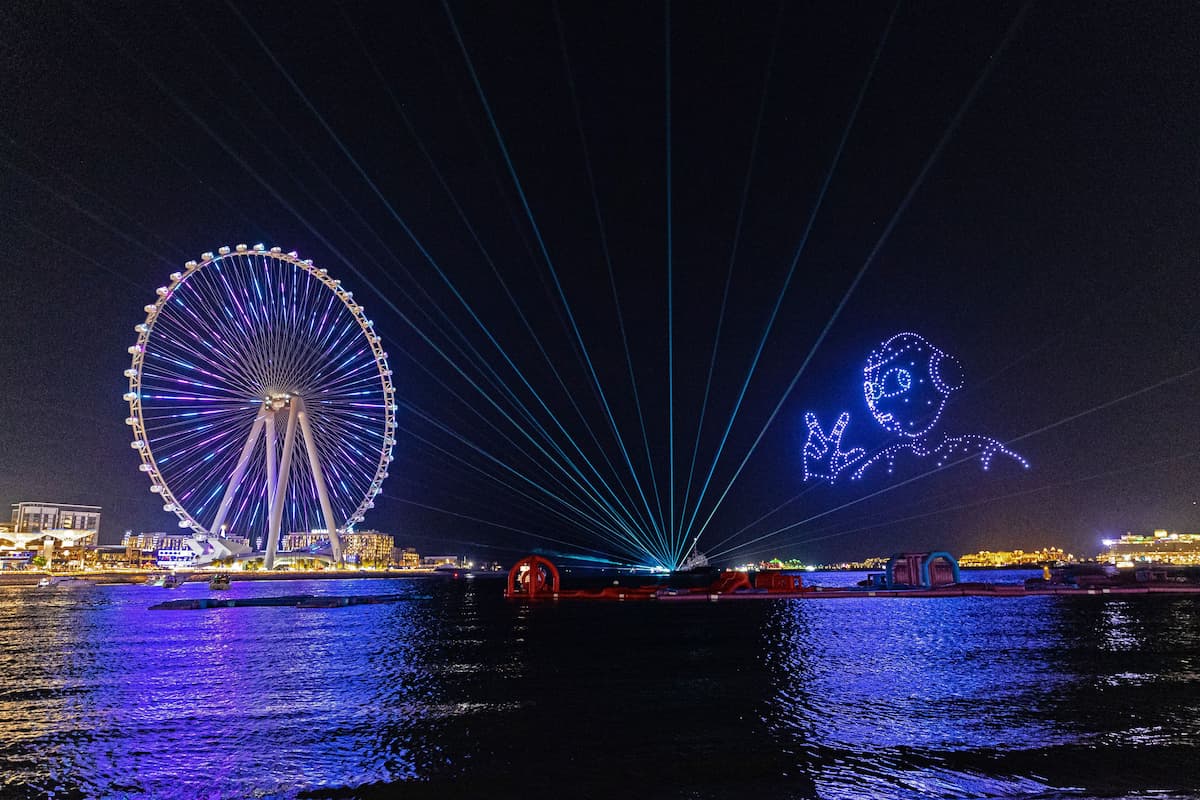
Precise flight control is paramount. Each drone uses an onboard inertial measurement unit (IMU) and GPS for positioning. The GCS transmits commands to each drone individually via a dedicated communication network, often utilizing protocols like WiFi or dedicated radio frequency bands to ensure low latency and minimal interference. Redundancy is built in to prevent loss of control in case of signal failure.
Drone Show Programming Methods
Several methods exist for programming drone show choreography. Some use visual programming environments where users can drag and drop elements to create formations and sequences. Others utilize text-based programming languages, allowing for more complex and customized displays. The choice depends on the complexity of the show and the expertise of the programming team. Visual programming offers ease of use, while text-based languages provide greater control and flexibility.
Drone Show Stages Flowchart
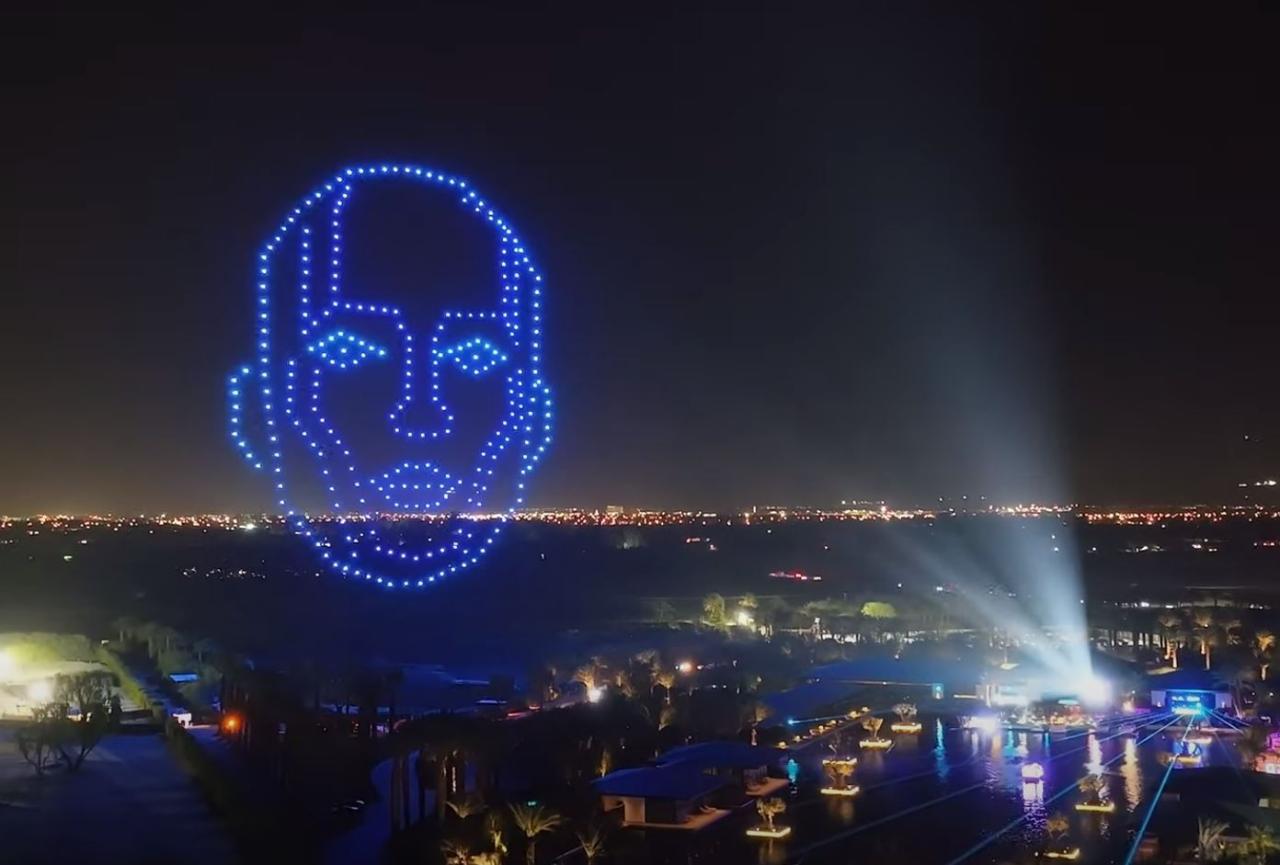
The process of creating a drone show involves several distinct stages. A clear understanding of these stages is essential for a successful show. The following flowchart illustrates the typical steps involved.
- Planning & Concept Development: Defining the show’s theme, duration, and desired visual effects.
- Choreography & Programming: Designing the flight paths, formations, and light sequences using specialized software.
- Location Scouting & Permits: Identifying a suitable location and obtaining the necessary permits and approvals.
- Drone Preparation & Testing: Preparing the drones, testing the software and hardware, and conducting rehearsal flights.
- Show Execution & Monitoring: Executing the show, closely monitoring the drones, and addressing any unforeseen issues.
- Post-Show Debriefing: Reviewing the show’s performance, identifying areas for improvement, and gathering feedback.
Drone Show Planning and Design
Transforming a concept into a breathtaking drone show requires meticulous planning and creative design. This section provides a step-by-step guide to navigate this process effectively.
Step-by-Step Guide for Planning a Drone Show
- Define the Show’s Theme and Objectives: Establish a clear theme and goals for the show. This will guide all subsequent decisions.
- Develop a Detailed Timeline: Create a realistic timeline outlining key milestones, from initial planning to final execution.
- Secure Necessary Permits and Approvals: Obtain all required permits from relevant aviation authorities and local governments.
- Choose a Suitable Location: Select a location that meets the show’s needs regarding space, visibility, and safety regulations.
- Develop a Budget: Create a comprehensive budget that accounts for all expenses, including drones, software, personnel, and permits.
- Assemble a Skilled Team: Recruit experienced drone pilots, programmers, and support staff.
- Conduct Thorough Rehearsals: Perform multiple rehearsals to ensure flawless synchronization and address any potential issues.
Choreographing a Drone Show
Choreography is the heart of a drone show. It involves designing intricate formations and patterns synchronized with music and visual effects. Software tools allow choreographers to create 3D models of the drone formations and simulate the show’s visual impact.
Examples of Formations and Patterns
Drone shows utilize a wide variety of formations, from simple geometric shapes to complex, dynamic patterns. Common formations include lines, grids, circles, and spirals. More advanced shows incorporate intricate designs and even 3D sculptures.
Selecting a Suitable Location
Location selection is crucial. Factors to consider include airspace restrictions, visibility, audience capacity, and proximity to infrastructure. Open spaces with minimal obstacles offer the best viewing experience.
Sample Budget Breakdown (Medium-Sized Show)
| Expense Category | Estimated Cost |
|---|---|
| Drone Acquisition | $20,000 – $50,000 |
| Software & Hardware | $5,000 – $15,000 |
| Personnel (Pilots, Programmers, etc.) | $10,000 – $30,000 |
| Permits & Insurance | $2,000 – $5,000 |
| Marketing & Promotion | $3,000 – $10,000 |
| Contingency | $5,000 – $10,000 |
Drone Show Safety and Regulations
Safety is paramount in drone shows. This section addresses potential risks and Artikels the necessary safety protocols and regulatory frameworks.
Potential Risks and Mitigation Strategies
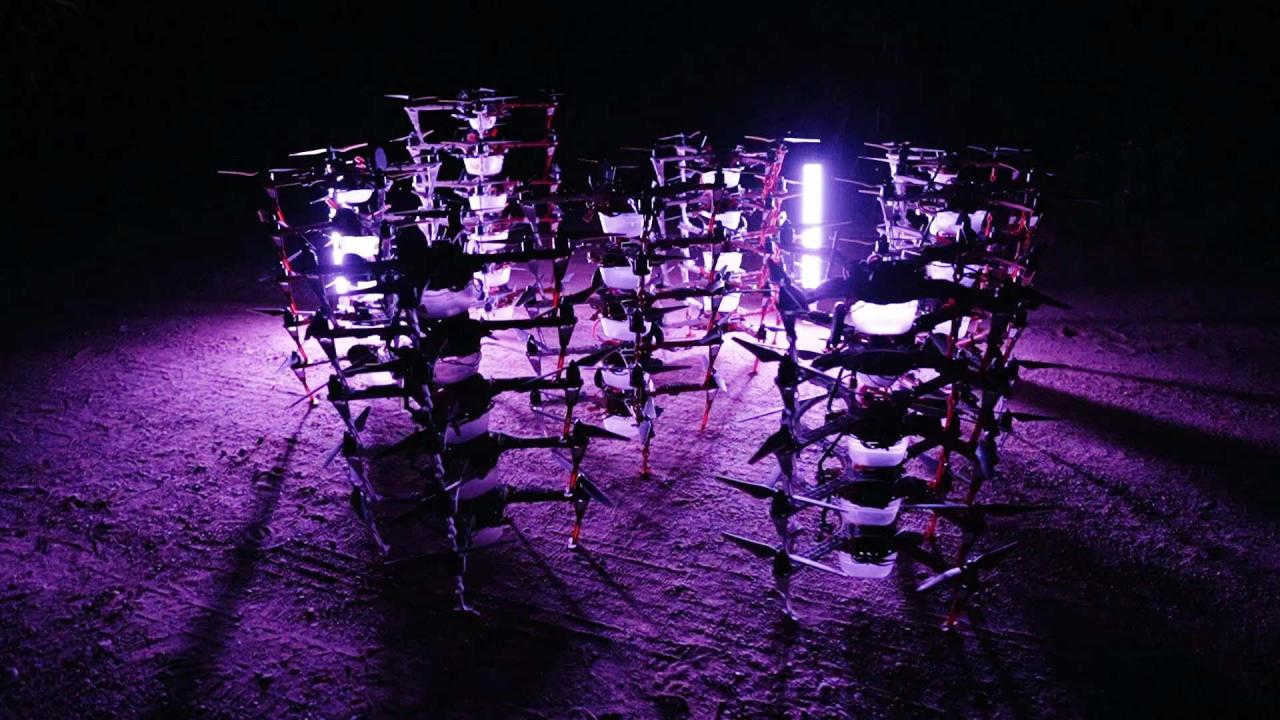
Potential risks include drone malfunctions, loss of signal, collisions, and unintended damage to property or people. Mitigation strategies involve using redundant systems, employing skilled pilots, and adhering to strict safety protocols. Regular maintenance and pre-flight checks are also crucial.
Legal and Regulatory Frameworks
Drone shows are subject to various regulations depending on the country and location. These regulations often cover airspace restrictions, pilot licensing, insurance requirements, and safety protocols. It’s essential to research and comply with all applicable laws and regulations before conducting a drone show.
Safety Protocols for Operators and Spectators
Drone operators must be properly trained and licensed. Spectators should be kept at a safe distance from the flight area. Clear signage and communication are crucial to maintain safety.
Importance of Emergency Procedures
Having well-defined emergency procedures is crucial. These procedures should Artikel steps to take in case of drone malfunctions, loss of control, or other emergencies. A designated safety officer should be responsible for overseeing the implementation of these procedures.
Comparison of Safety Regulations
| Region | Licensing Requirements | Airspace Restrictions | Insurance Requirements |
|---|---|---|---|
| United States | FAA Part 107 certification | Vary by location, often requiring NOTAM filings | Generally required |
| European Union | EU drone regulations (vary by country) | Strict airspace restrictions, often requiring prior authorization | Usually required |
| Canada | Transport Canada regulations | Similar to the US, requiring NOTAM filings in many cases | Generally required |
Drone Show Marketing and Promotion
Successfully promoting a drone show requires a well-defined marketing strategy. This section Artikels key strategies for reaching your target audience and securing sponsorships.
Marketing Strategy for a Drone Show
A successful marketing strategy involves identifying the target audience, defining key messages, and selecting appropriate marketing channels. The marketing plan should encompass social media campaigns, public relations efforts, and collaborations with local businesses.
Effective Marketing Channels
Effective marketing channels include social media platforms (Instagram, Facebook, Twitter), local news outlets, websites, and event listing websites. Targeted advertising campaigns on social media can also be highly effective.
Sample Social Media Campaign
A sample campaign might include visually appealing posts showcasing the show’s unique features, behind-the-scenes content, and interactive elements such as contests and giveaways. Utilizing relevant hashtags and engaging with followers is crucial.
Securing Sponsorships, Drone show
Securing sponsorships can significantly reduce costs. Identifying potential sponsors who align with the show’s theme and target audience is essential. A well-crafted sponsorship proposal outlining the benefits of sponsorship is crucial.
Creating Visually Appealing Promotional Materials
High-quality visuals are crucial. Promotional materials should include captivating images and videos showcasing the show’s unique features and the overall experience. Professional design is highly recommended.
The Future of Drone Shows
The drone show industry is constantly evolving. This section explores emerging technologies and predicts future trends.
Emerging Technologies
Emerging technologies like AI-powered choreography, autonomous flight systems, and more sophisticated lighting technologies are poised to revolutionize drone shows. Integration with augmented reality (AR) and virtual reality (VR) could also enhance the spectator experience.
Challenges and Opportunities
Challenges include regulatory hurdles, technological limitations, and the need for skilled personnel. Opportunities exist in expanding the scope of drone shows, incorporating new technologies, and creating more immersive experiences for audiences.
Future Trends
Future trends point towards larger, more complex shows with enhanced visual effects, greater synchronization, and increased audience engagement. Integration with other forms of entertainment, such as music concerts and theatrical performances, is also likely.
Integration with Other Entertainment Forms
Imagine a rock concert where the band’s performance is enhanced by a synchronized drone show, creating a truly immersive experience. This kind of integration is becoming increasingly feasible and attractive.
Innovative Ideas for Future Drone Shows
- Interactive drone shows where audience participation influences the show’s choreography.
- Drone shows synchronized with fireworks displays.
- Drone shows that create 3D holographic projections.
- Drone shows integrated with augmented reality experiences.
- Use of bioluminescent drones for environmentally friendly shows.
Illustrative Examples of Drone Shows
Several memorable drone shows have pushed the boundaries of technology and creativity. This section highlights some notable examples.
Memorable Drone Show: A Case Study
The opening ceremony of the 2020 Olympics (hypothetical example) featured a stunning drone show depicting the host country’s history and culture. The show incorporated thousands of drones creating complex formations and dynamic light displays synchronized with music and narration. The show’s scale and precision left a lasting impact on the audience.
Visual Effects and Choreography
This hypothetical show utilized advanced algorithms to create seamless transitions between formations, with drones moving in precise, synchronized patterns to create stunning visual effects. The choreography incorporated elements of storytelling, building suspense and excitement throughout the performance.
Technological Innovations
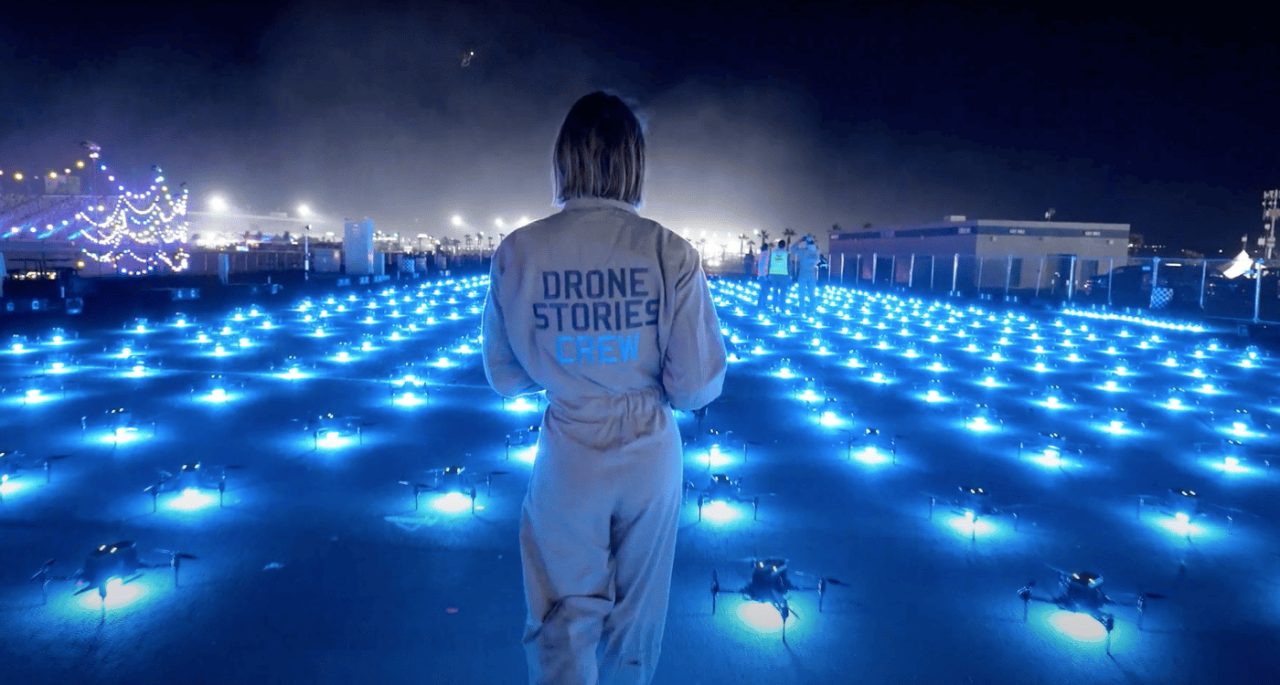
The show leveraged advanced GPS technology and sophisticated communication protocols to ensure flawless coordination among thousands of drones. Custom software allowed for precise control of individual drone movements and light patterns, enabling the creation of complex and dynamic visuals.
Drone shows are awesome, right? They can create amazing light displays in the sky. Want to see how coordinated planning goes into making these spectacular events? Check out the logistics involved in the jack and jill game , a great example of the teamwork needed to make a drone show a success. This game illustrates the complex choreography required for a seamless drone show performance.
Integration of Music and Visuals
The music and visuals were meticulously synchronized, enhancing the storytelling and emotional impact of the performance. The music dynamically changed to match the evolving formations and light displays, creating a harmonious and engaging experience.
Unique Theme or Narrative
The show’s theme focused on the host country’s rich cultural heritage, weaving together historical events, artistic expressions, and national symbols. The drone choreography effectively conveyed this narrative, making the show both visually spectacular and culturally significant.
Closing Notes
Drone shows are more than just a technological marvel; they’re a testament to human creativity and innovation. As technology continues to advance, the possibilities for drone shows are limitless, promising even more spectacular and immersive experiences in the years to come. Whether you’re a budding drone enthusiast, a seasoned event planner, or simply captivated by the beauty of a well-executed drone show, we hope this guide has provided valuable insights into this fascinating and rapidly growing field.
Drone shows are amazing spectacles of light and technology, offering breathtaking visuals. Thinking about the precision involved, it makes you appreciate the complexities of flight, even contrasting it with something like the tragic airplane crash halifax , which highlights the importance of safety protocols in aviation. Back to drone shows, though – the choreography and programming behind them are equally impressive, creating unforgettable experiences for viewers.
The sky’s the limit – literally!
Drone shows are amazing spectacles of coordinated light and movement, but they also highlight the importance of airspace management. Think about the scale and precision needed – a stark contrast to the devastating consequences of events like the jeju air crash , which underscores the critical need for robust safety protocols in all forms of aerial activity. Ultimately, responsible drone operation ensures these breathtaking displays continue safely.
FAQ Summary
How much does a drone show cost?
The cost varies greatly depending on the show’s scale, duration, complexity, and location. Expect to pay anywhere from a few thousand to hundreds of thousands of dollars.
What kind of weather is suitable for a drone show?
Calm, clear weather with minimal wind is ideal. Rain, strong winds, or fog can significantly impact safety and visibility.
How long does it take to plan a drone show?
Planning can take several weeks or even months, depending on the complexity and scale of the show. This includes securing permits, choreography, and logistics.
What are the legal requirements for a drone show?
Regulations vary by country and region. You’ll need to obtain necessary permits and comply with airspace restrictions and safety regulations.
